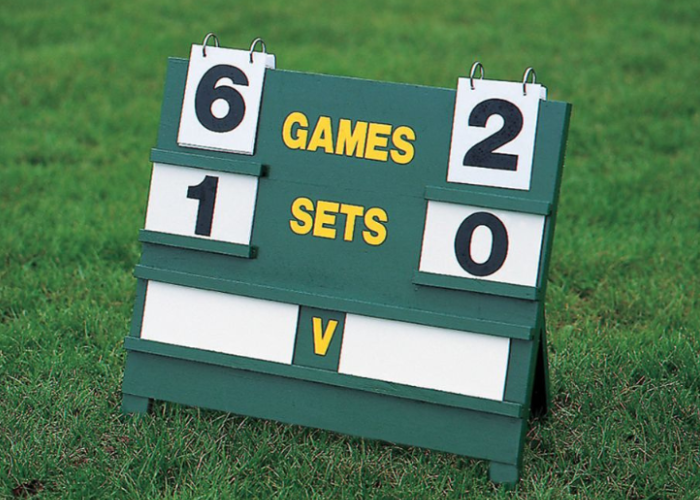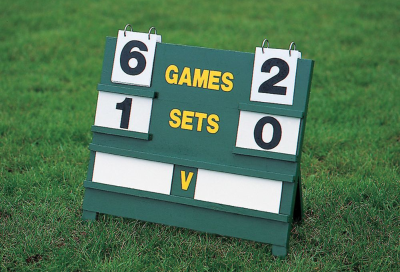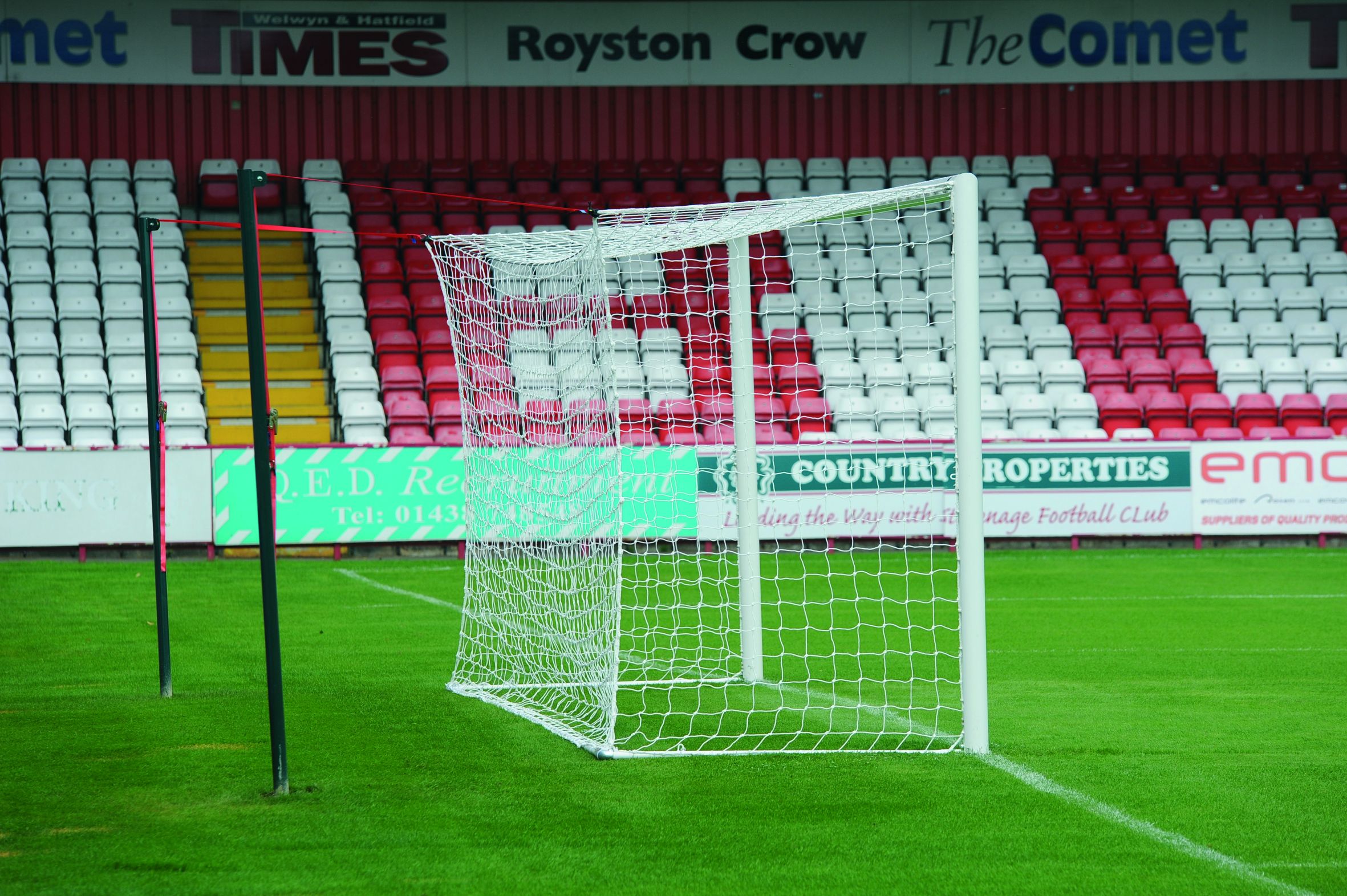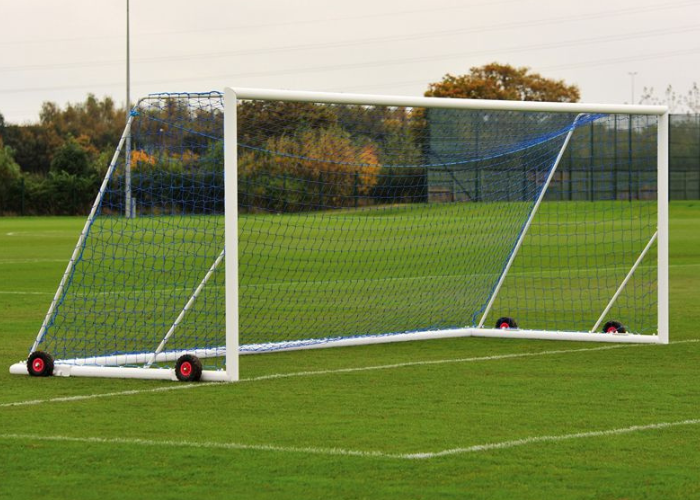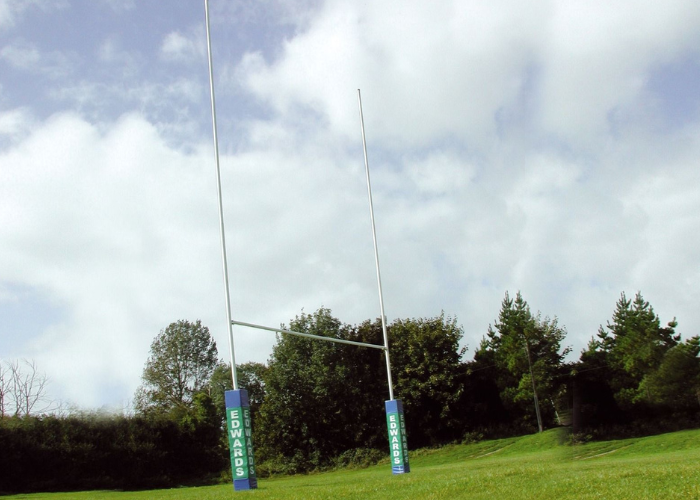We use cookies to make your experience better. To comply with the new e-Privacy directive, we need to ask for your consent to set the cookies. Learn more.
Tennis Scoreboard Explained: A Guide to Reading Tennis Scores
- Admin
- Blog Posts
- 18 May 2022
-
920views
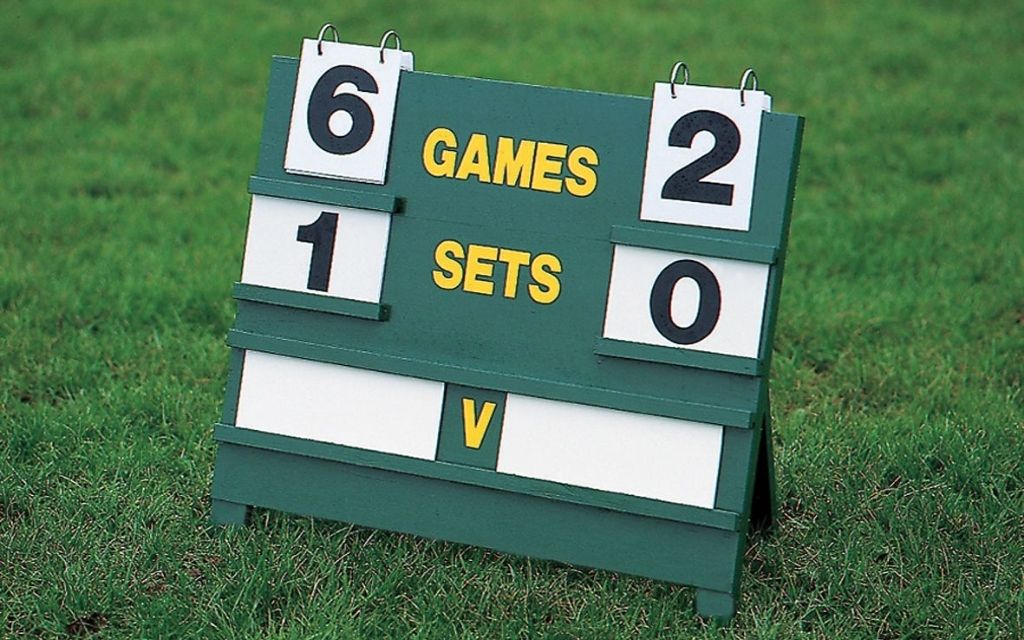
Are you a new tennis fan a little perplexed by the scoring system? Or a sports organiser looking to introduce tennis to your community? Either way, understanding the ins and outs of a tennis scoreboard is crucial to fully enjoying the game.
Tennis scoring may seem complicated at first, but once you get the hang of it, it's actually quite simple.
There are games and sets that make up the scoring system, and each is scored (or recorded) in a particular way.
Let's start with the basics…
Are you part of a school, club, or sports facility about to welcome tennis to your facility?
Edwards Sports can provide you with professional, high-quality tennis equipment to complete your court.
From scoreboards and court accessories to the all-important tennis net, we have everything you need to get started. Explore our full tennis range online today!
Order Tennis Court Essentials Online
How Do Points Work in Tennis?
The tennis scoring system can be quite confusing for newcomers, but once playing commences, you'll find it isn't a difficult sport to follow.
We will try to break down the points system into simple terms, telling you how you score points later on. So, without any fluff, let's get into it.
Point Scoring Terms & Basic Knowledge:
• Love: Zero points
• 15: 1 point
• 30: 2 points
• 40: 3 points and game (providing the winning player is two points clear)
• Deuce: Both players reach 40-40. To win the game, a player must win two consecutive points
• Advantage (Ad): The point won after deuce
• Ad-in: Server wins the point after deuce
• Ad-out: Reciever wins the point after deuce
One more thing to note is the phases of each tennis match, which you've probably heard before — Game, Set, and Match.
A game is played until a player reaches 4 points (or more, depending on whether there's a deuce).
A set is a collection of games played until a player reaches 6 or more wins (the last two points need to be consecutively won, but we'll talk more about that later).
Finally, a match is won when a player wins the required number of sets. It's usually the best of 3 or 5. In men's Grand Slam events, the winner is usually the first to win 3 sets of 5.
Tennis Scoring Rules
There are a few situations in which a player won't win the game or set if they reach the required points. Let's explain what we mean:
Winning a Game
During a game, if a player wins 4-3, they will not win the game. They need to win by two clear points, for example, 5-3.
If the game is 3-3 (40-40), this is called a deuce, and the player who wins the next point has advantage, but they haven't won yet, they'll need to win the next point.
However, if their opponent wins the next point, the game returns to deuce until a player wins by two clear points.
Winning a Set
Winning a collection of games is called a set, as you now know. You usually need to win 6 to win the set with a minimum two-game margin. Below are a few examples:
• 6-0, 6-1, 6-2, etc., wins the set if there's a two-game margin.
• 6-5 isn’t enough to win; the leading player must win 7-5 to secure the set.
• If the set reaches 6-6, a tiebreak is usually played unless an advantage set is being played. In this case, players must continue until one of them leads by two points. e.g. 8-6.
Tiebreaks
In a tiebreak set, players need to win six games to win the set. If the score is 5-5, one player needs to win the next two games to win the set.
If the score reaches 6-6, a tiebreak game is played.
In a tiebreak game, the player due to serve serves the first point from the right. After the first point, players serve two points each, starting from the left. Players will then switch sides every six points (e.g., after 3-3).
The first player to win 7 points by a 2-point margin will win the tiebreak.
How Tennis Players Win Points
Tennis points are won by combining skill, strategy, and mental toughness. Whether it's hitting winners, capitalising on opponents' mistakes, or forcing their errors, the key is to outlast your opponent.
Here is a breakdown of how you exactly win points:
- Forcing errors from the opponent — If a player is under pressure, they're more likely to make mistakes, like hitting the ball into the net or out of bounds, giving their opponent the point.
- Hitting a winner — A winner is a shot the opponent can't reach or hit back due to its perfect placement, speed, and spin, awarding the other player the point.
- Serving aces — An ace occurs when the player serves the ball and the opponent fails to touch it, resulting in an immediate point for the other player.
- Double faults by the opponent — A player wins a point if their opponent double faults — failing to land both their first and second serves in the correct service box.
- Opponent fails to return the ball properly — If the opponent hits the ball out of bounds, into the net, before it bounces, or bounces twice on their side before returning, the other player will receive a point.
- Net violation & foot faults from the opponent — If the opponent touches the net with their racket, body, or clothing during a point, the other player will get a point. The same is true if the opponent is serving and steps a foot over the baseline before their serve.
- Hindrance or code violations — Players can win points if the opponent deliberately distracts them during a point or commits a code violation (like repeated time violations or unsportsmanlike conduct).
Read About the Fastest Serve in Tennis & 14 Other Great Tennis Facts
How to Read Tennis Scores
Tennis scoreboards can be complex at first glance, but once you understand the basic layout, it'll be easy to interpret when you watch your next game.
So, a basic scoreboard usually displays the following information: player names, set scores, current game scores, and match status indicators (like a symbol or light indicating who is serving, who has won, etc.).
The set score will be shown in a 1,2,3, etc. layout, but the games will be shown in the traditional tennis layout, which is, as you now know, 15, 30, 40, and game — the winning point.
If a tiebreak is played, the scoreboard might show something like 7-6 (7-4). The 7-6 indicates the set score, while the (7-4) indicates the tiebreak score.
If a deuce (40-40) is shown, when a player wins the next point, it might show Ad-in or Ad-out.
During professional Grand Slam matches like Wimbledon or the US Open, scoreboards may also include match duration, challenge system, serve speed, and match statistics.
Shop Our Tennis Scoreboard Here
Tennis Scoreboard Buying Guide
We understand that choosing a tennis scoreboard can be challenging. With so many options to choose from and so many features to consider, how will you find the right one?
We have included our tennis scoreboard buying guide below to help you.
Features
If you want a reliable tennis scoreboard, you should look for crucial features before you make a purchase.
All scoreboards should display four elements: set scores, current game scores, match status indicators, and players’ names. This information is crucial for both players and spectators to keep track of the match's progress.
Quality
Quality is something you want to consider when purchasing a tennis scoreboard. If you are used to playing outdoors in wet climates, you want to choose a scoreboard that can withstand this.
For example, a flipper scorecard may not be ideal as it can be blown over by harsh winds. You may need to consider something sturdier.
Digital or Manual
Both digital and manual scoreboards have pros and cons. Manuals are much more reliable, as you don't have to worry if there is a power outage during a match. They're also significantly cheaper than digital scoreboards.
However, digital scoreboards are more convenient and eliminate the risk of human error.
Tennis Scoreboard Software
Tennis scoring apps have grown in popularity. They are portable and cost less than a physical scoreboard.
This is the ideal solution for those on a tight budget. However, apps can be temperamental, and you'll likely need WiFi or internet service to use them, so this is something to remember.
Edwards Sports Wooden Scoreboard
If you want a tennis scoreboard that offers outstanding durability, you cannot go wrong with our Wooden Scoreboard. It's complete with flip-over game numbers, set numbers, name cards and a marker pen, so you can keep track of scores in the traditional way.
Perfect for a sports facility, school, or leisure centre where different people will use it daily!
Conclusion: Understanding Tennis
Understanding tennis isn't the easiest thing in the world. There are many different aspects to remember when watching or playing a match.
It can seem complicated at first, but once you understand the flow of points, games, sets, and matches, it becomes intuitive.
So whether you're a seasoned Grand Slam enthusiast or a newcomer to the sport, we hope we've given you valuable insight into the scoring rules and points system of a game of tennis.
If tennis is a new hobby or you're a sports facility looking to include it in your programme, why not check out our full range of tennis equipment?
We at Edwards have over 130 years of experience in the industry, so you can trust us to deliver professional, high-quality, long-lasting equipment for your tennis courts.
Browse our stock below and find out why some of our equipment is the top choice for Wimbledon!
Shop Our High-Quality Tennis Equipment Here
FAQs
Who Invented Tennis Scoring?
The exact origin of the tennis scoring system is actually a little hazy, but it's mostly believed the system dates back to medieval France, stemming from the French game jeu de paume.
The earliest reference to the scoring system dates back to 1435 in a ballad by Charles D'Orléans.
How Do Tennis Points Work?
Tennis is played in three sections: game, sets, and match. During games, the point system is Love, 15, 30, 40, and game point. During sets, the points go up numerically starting from 1, and matches are usually best of 3 or 5.
When Does a Tennis Match End?
A tennis match ends when a player has won the best of 3 or 5 sets. To win a set, you have to win at least 6 games.








